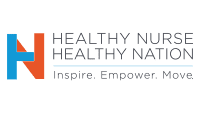Dizziness, profuse sweating, a gnawing sensation in the pit of your stomach. Are these symptoms of the latest virus? No—they’re classic indications of glossophobia, or fear of public speaking.
Few things conjure up more anxiety than the prospect of speaking in front of an audience. But getting past your fear to give a presentation can be a life-changing—and a career-changing—event. Especially for nurses who feel unappreciated and undervalued, public speaking is an opportunity to present both themselves and nursing in a powerful and positive light.
Public speaking is more than just another line to add to your résumé. As more and more nurses are discovering, it’s a vehicle for getting your career and profession on the radar screen.
At this point, you may be thinking, “She can’t be serious! Who’d want to hear me speak?”. But even if you lack charisma (or think you do), that’s OK. You don’t need to be a charismatic speaker to be a successful one. In fact, most successful speakers aren’t great speakers—just competent ones. They simply tell the audience what they believe, or what they’ve experienced, or what they know or want others to know. It’s not as hard as you might think.
VOICE advice
For a simple but effective way to improve your public speaking, think of the word VOICE. Each letter stands for a technique good speakers use:
V — Visualize your performance and use visuals
appropriately.
O — Own the objective.
I — Identify your ideas.
C — Compel your audience to listen.
E — Eye your audience.
V for “visualize”
Visualize yourself giving the presentation—communicating your message effortlessly as the audience claps and smiles in approval. This will help reduce your anxiety.
Visualize also pertains to the visual aids you can use to support your presentation. Visual aids help the audience retain what you say. But be selective; save them for the most important information—your take-away points. Don’t overdo them, and don’t let them replace your speech. For the audience, few things are more boring than listening to a speaker read from notes on a screen as they read along.
Appearance is another visual aspect of your presentation. When speaking, always dress up a notch more than the audience. Your clothing should reflect your professional demeanor, so skip the bangles and other noisy jewelry (especially if you’ll be at a microphone) and opt instead for a simple, elegant, professional look.
O for “own”
Get clear on your objective. What’s the purpose of your presentation? What’s your take-away message? If you can’t identify your objective, your audience never will. And if you can’t state it in a sentence or two, it’s probably not focused enough. Narrow it down.
I for “identify”
Brainstorm ideas for your presentation, then pick three or four of them to talk about. List them in the order that makes the most sense. To help your audience get the message, organize your presentation like a magazine article, with a beginning (introduction), a middle (body of the speech), and an ending (conclusion).
C for “compel”
Make your presentation compelling. Don’t start by telling the audience what you’re going to say (“I’m going to talk about…”). Instead, capture their attention with an enlightening quote, an anecdote, a challenge, or an interesting or surprising fact (“Nurses are six times more likely to retire wealthy”). Or try a little humor—but steer away from anything offensive.
As you proceed through your presentation, make sure to deliver the goods by supplying the information you’ve promised. Then end your presentation in an equally compelling way. Share an inspiring quote. Challenge the audience to take some sort of action. Or bring the message home with an anecdote that spotlights the human side of your topic. Whatever you do, don’t let your presentation wither away with a weak, “And that’s all I have to say.”
E for “eye”
Make eye contact with your audience. This is probably the hardest thing for novice speakers to do—yet it’s valuable because it allows you to project and to convey the power and importance of your message. It’s also a vehicle for conveying your enthusiasm and passion for the topic and helping the audience connect with you as a speaker.
“Let’s give a warm welcome to our next speaker.”
Public speaking is all about preparation, and this requires rehearsal. It’s also a career-enhancing tool and a way of owning your fear, rather than letting your fear own you.
For some of us, fear of public speaking may originate in childhood, when we were told that good little girls and boys should be quiet. Even if this message was drilled into you as a child, you can overcome it as an adult. As Janet Stone pointed out in her book Speaking Up: A Book for Every Woman Who Talks, “Almost all of us are born speakers; we had to be taught to sit down and shut up.”
Through public speaking, you connect to a power inside yourself and a voice waiting to be heard. So stand up and speak!
Selected references
Borgatti J. Frazzled, Fried…Finished? A Guide to Help Nurses Find Balance. Borgatti Communications: 2004. Available at: www.joanborgatti.com and www.booklocker.com.
Stone J, Bachner J. Speaking Up: A Book for Every Woman Who Talks. New York: Carroll & Graff; 1994.
Toastmasters International. www.toastmasters.org.
Joan C. Borgatti, MEd, RN, is the owner of Borgatti Communications in Wellesley Hills, Mass., which provides writing, editing, and coaching services. Her website is www.joanborgatti.com.


















